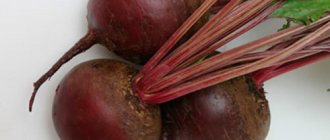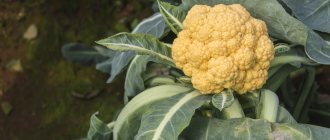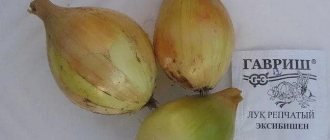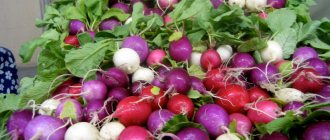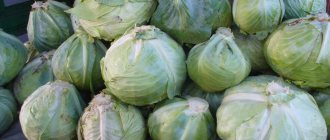Description of the mini carrot variety
Mini-carrots are a special cultivar characterized by their miniature fruit and short ripening period. This vegetable is often called baby or baby carrot.
Reference. In some cases, mini-carrots are a common root vegetable that has not reached full size and harvested before full maturity.
The best varieties of mini carrots
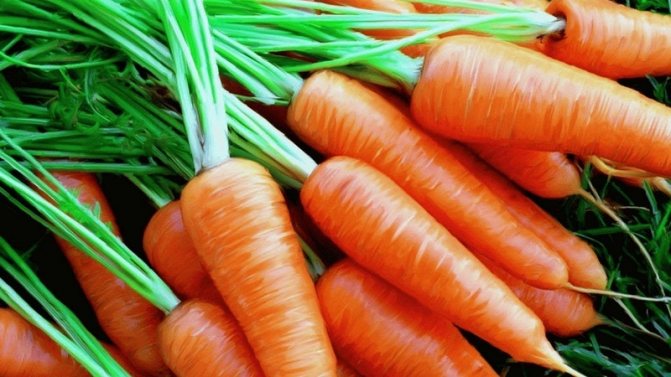
Among the variety of varieties, the following stand out:
- Caracas - an early cold-resistant variety. Suitable for growing on an industrial scale: a powerful leaf apparatus is convenient for harvesting with a top-lifting combine, the variety is undemanding to thinning.
- Carotel - mid-season, resistant to shooting variety. From germination to full maturation, it takes 100-110 days. Suitable for winter sowing. Conical fruits from 9 to 15 cm long and weighing 80-160 g. Possesses good keeping quality and transportability.
- Marlinka - medium early variety (95 days). Fruit length up to 10 cm, weight - 90-170 g. They have soft and juicy flesh.
- Polar cranberry - early ripening (65 days) cold-resistant variety. Root crops of a non-standard rounded shape, like a radish. They have a smooth thin skin with small eyes. Poor keeping quality, but excellent taste.
- Rondo - a hybrid of Czech selection. It takes 80-85 days from germination to harvest. Root crops are small (3-5 cm), round shape. Does not give arrows, is resistant to cracking.
- Khibiny greenhouse - early ripening (54-70 days before collection of bunch carrots, 90-100 - until full maturity) high-yielding variety, bred in the Russian Arctic. The root crop is round, small, weighing up to 35 g.
Origin and development
Mini carrots became popular in the early 1980s. Farmer Mike Yurozek from California (USA) was denied the sale of a large batch of vegetables due to the fact that they were substandard - too thin, short, forked and twisted. To save the day, the farmer peeled the carrots and cut them into small cylinders. In this form, the product fell in love with many Americans, as it was completely ready for use.
On this wave, interest aroused in the varieties of dwarf carrots that existed long before the "discovery" of Yurozek: Grelo, Davantur. The subsequent work of breeders in different countries has led to the modern variety of mini-carrots.
Chemical composition and useful properties
Baby carrots contain almost the same complex of vitamins and minerals as a regular-sized root vegetable.
Mini carrots are rich in:
- beta-carotene - 10-13 mg per 100 g of product, which is 2-2.5 times higher than the daily requirement of an adult;
- vitamin A - 2000 mcg;
- vitamin C - 5 mg;
- calcium - 27 mg;
- potassium - 200 mg;
- phosphorus - 55 mg;
- iron - 0.7 mg;
- copper - 800 mcg.
Unlike many other vegetable crops, during heat treatment, carrots not only do not lose their beneficial properties, but multiply them. The best absorption of trace elements is facilitated by the combination of carrots with fats: dairy products or vegetable oils.
Reference. Carrot juice with milk or cream is recommended to drink before going out into the sun - the tan will acquire a beautiful shade.
Useful properties of carrots:
- Beta-carotene protects the skin from the harmful effects of ultraviolet radiation, is responsible for its healthy appearance and smoothness.
- Vitamin A improves vision.
- Carrots serve as a prophylactic agent for iron deficiency anemia.
- It is indicated for diseases of the cardiovascular system, high blood pressure, atherosclerosis.
- Helps to cope with vitamin deficiency.


Application features
Mini carrots are good both raw and cooked. It can be used in salads, soups, vegetable stews, mashed potatoes, as a side dish or as a pie filling. Fresh mini carrots are good as a light snack and as a healthy alternative to sweets.
In stores, fresh mini-carrots appear at the very beginning of summer, at other times of the year they are sold whole frozen or canned.
Reference. Glazed mini carrots are a favorite side dish for children in France. For its preparation, peeled root vegetables are mixed with water, honey and vegetable oil. Then simmer in a hot skillet for 7 minutes. Sprinkle the finished dish with lemon juice and sprinkle with finely chopped fresh parsley.
Ripening period and yield
Depending on the variety, the growing season of the crop ranges from 50 to 110 days.
The small size of root crops does not prevent mini-carrots from yielding from 260 to 770 centners per hectare of planting.
Characteristics, description of appearance, taste


Mini carrots have a cylindrical fruit with a blunt tip. Fruit sizes: 5-8 cm in length, 1.5-3 cm in diameter. However, there are varieties with rounded roots. The high carotene content gives baby carrots a bright orange color.
Miniature roots are juicy and sweet.
Disease resistance and climate demanding
Mini carrots are resistant to cracking, shooting, rots and leaf blight. The variety is characterized by a great variety, therefore it is suitable for growing in almost any climatic conditions:
- for the Central Black Earth Region, the Marlinka variety is suitable;
- in the middle lane, in the Urals and in Siberia, Caracas mini-carrots yield;
- with proper care, the harsh climate of the northern regions is tolerated by the Polar Cranberry and the Khibiny Greenhouse.
Useful properties of "Carrot oil"
Oil extract from carrot roots - "carrot oil" - is exclusively the property of traditional medicine.
As already mentioned, carrots contain a huge amount of carotene, so they can reasonably be used for the preparation of medicines like sea buckthorn oil or carotene (rosehip oil).
With the help of "carrot oil" peptic ulcer disease of the duodenum or stomach is successfully cured. Outwardly, the drug is recommended to be used in case of pressure sores, thermal damage to the skin, cracks and ulcers.
It is necessary to remove the skin from the washed root crop (scrape off) and grind it on a not very fine grater (so as not to get gruel). Place the chopped carrots in a glass container (do not tamp), filling up to a third of the volume, then pour olive oil to the top. Next, you should put the container in a water bath and incubate for 2 hours. Strain the cooled oil and seal in dark glass bottles (keep in a cool place).
For the treatment of internal diseases, the recommended dosage is 1 to 3 tsp. appointment.
Features of planting and growing
The cultivation of mini carrots is in many ways similar to cultivation of other cultivars. The main feature lies in the predominantly winter planting and a shorter growing season.
Preparing for landing
Seeds before planting are required:
- Sort. This is easily done by placing the seed in a saline solution (1 teaspoon salt in 1 cup water).Reject the specimens that have surfaced, and rinse the rest in running water and dry.
- Disinfect in a weak solution of potassium permanganate.
- When planting in regions with cold climates, harden: pour the seeds with water at room temperature, then place in the refrigerator for 3-4 days.
After each procedure, the seeds are dried so that they do not germinate ahead of time.
Ground requirements
Mini carrots are light-requiring, so a well-lit area is required to plant them. Other requirements include:
- good drainage, since the culture does not tolerate stagnant water;
- neutral soil acidity;
- fertile light soil - black soil, loam or sandy loam are ideal; in other cases, humus and peat are introduced into the soil a month before sowing.
Predecessors
It is better to plant carrots in the area where nightshades (tomatoes, zucchini, potatoes) or cabbage were grown. After these plants, the soil is saturated with nutrients necessary for a rich harvest.
On the former cucumber beds, carrots are sown no earlier than 2 years later, otherwise an excess of organic matter will lead to decay of the plantings at an early stage.
Reference. Pungent odors emanating from onions - onions, garlic, wild garlic - are capable of scaring off carrot flies. To save root crops from this pest, they practice joint planting of these plants.
Other umbellates (the family that carrots belong to) are considered bad predecessors - parsley, dill, caraway seeds, parsnips and celery - due to the danger of the multiplication of pathogenic fungi and bacteria.
Timing, scheme and landing rules
For winter planting, choose the middle - end of November. Earlier planting is fraught with seed germination and the emergence of seedlings, which will die with the onset of the first frost. Overwintered mini carrots will harvest in June.
In regions with frequent thaws and return frosts, spring planting is preferable. They choose the moment when the snow has already melted, but the soil has warmed up to no more than + 8 ... + 10 ° С. Depending on the climatic zone, this can be the second half of April or May. Covering material will help protect crops from frost.
To get a harvest with good keeping quality, choose mid-season and mid-early varieties. The optimal time for their disembarkation is May-June. The same period is suitable for re-sowing early varieties.
Important! Carrots do not tolerate excessively moist soil. About a month before planting, the site is covered with a film to protect it from rain and melting snow.
Despite the diminutiveness of root crops, it is recommended to maintain a distance between grooves of 2 cm and a depth of seeding of 2-2.5 cm.
Nuances of care
Carrot planting care includes watering, thinning and feeding plants, protecting against weeds, diseases and pests.
Watering mode
After the appearance of the first shoots, watering is carried out at a frequency of 1 time in 3 days, the water consumption is 3 l / m². As the plant grows, the frequency of irrigation is reduced to 1 time per week. In this case, about 10-15 liters of water are required for 1 m² of plantings. Watering is stopped a couple of weeks before harvesting.
Reference. The best effect is given by watering in the morning or evening hours, when the activity of the sun is reduced, and the air is warmed up by no more than + 20 ... + 25 ° С.
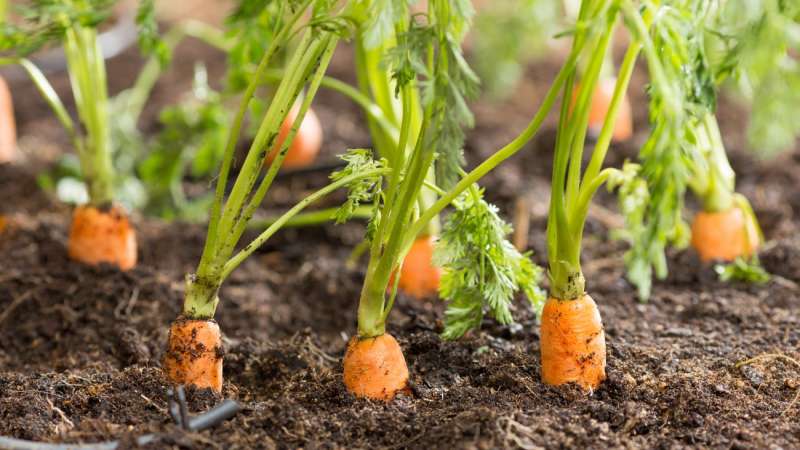

Thinning and weed control
Weeds and thickened planting interfere with the normal development of carrots. Therefore, immediately after the appearance of 2 true leaves, weeding the beds and simultaneous thinning are carried out. To achieve optimal density, a distance of 4-5 cm is left between the plants.
Soil herbicides (Gezagard, Reglon Super) help to reduce the number of weeding. The preparations dissolved according to the instructions are treated with the soil.
Top dressing
During the growing season of mini-carrots, 3 dressings are recommended:
- At the stage of 3-4 true leaves, the plant needs nitrogen and potassium fertilizers. For these purposes, a solution of 2 matchboxes of ammonium nitrate per 10 liters of water is suitable.
- After 2-3 weeks (the tops consist of 4-6 true sheets), fertilizing is carried out with complex fertilizers, for example, nitrofoskoy - 2 matchboxes per 10 liters of water.
- In the growth phase of the root crop, the outflow of nutrients from the aerial part occurs. For the formation of sweet and juicy fruits, phosphorus, boron and manganese are needed. Superphosphate (60-80 g per 10 liters of water) will help maintain the vitality of the plant.
To remove nitrates, 30 days before harvest, you can fertilize the soil with potassium-containing preparations.
Disease and pest control
The main cause of plant diseases is a violation of agricultural technology. As a rule, this is an incorrect crop rotation, excessive watering without ensuring adequate drainage, thickening of the plantings, the presence of weeds and insufficient loosening.
Carrots are most susceptible to fungal diseases:
- Phomosis manifests itself in the form of dark brown spots on the tops, stalks and the root crop itself.
- Alternaria (dry or black spot) is characterized by dark spots, curling foliage and a bitter taste of carrot pulp.
- Cercosporosis leads to darkening of the tops, deformation and crushing of root crops.
- Brown spotting is more common in young plants, the first sign is a darkening of the tops at the base, as the leaves grow, they begin to turn yellow and acquire a brown color.
- Powdery mildew reveals itself on the characteristic white bloom on plants.
- Rhizoctonia (felt rot) is a putrefactive plaque on roots that gradually thickens and forms a crust.
Among bacterial diseases, carrots are especially often affected by bacteriosis: the lower part of the tops turns yellow, then brown areas are formed on the root crop.
The following drugs are used for treatment:
- decoctions of herbs (celandine, nettle, horsetail);
- Bordeaux liquid;
- copper oxychloride (HOM);
- contact chemical fungicides - "Rovral" ("Iprodion"), "Skor" ("Difenoconazole");
- biofungicides - "Fitosporin-M", "Micorad MALSANO" ("Trichodermin").
Malicious pests of carrot plantings are considered to be carrot fly, moth and flies. Fight them with:
- industrial insecticides (Intavir, Karatan, Karate Zeon, Medvedoks);
- folk remedies (tobacco-soap and saline solution, infusion of onions or garlic);
- repellent plants (calendula, marigolds, onions, garlic);
- mulch between rows (wood ash, coniferous sawdust).
Harvesting and storage
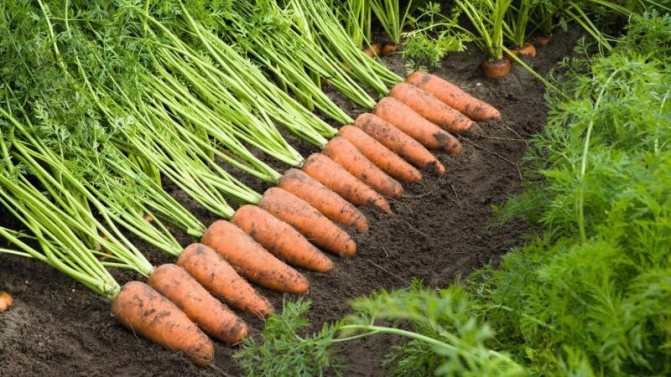

The ripeness of the root crop is determined by the state of the ground part... The dying off of the lower leaves indicates the readiness of the plant for harvesting. Also, the gardener should be guided by the terms specified in the instructions for the seed.
Harvest in dry weather - damp carrots will not be stored for a long time. If necessary, the roots are dried in the open air, hiding from direct sunlight under an awning.
Reference. Removing the tops helps to extend the shelf life - it is cut or torn off with twisting movements.
Storage features and keeping quality
Early varieties of mini-carrots have poor keeping quality, so it is recommended to eat them or prepare them in any way possible: freeze, preserve or dry them in the nearest time after harvesting.
More maturing mid-season and mid-early varieties - Karotel and Marlinka. Such carrots are stored in a cool dry in the cellar for several months.
Benefits for children
Regular consumption of carrots has a positive effect on the development and well-being of the child. It allows you to meet the need for carotene in the body.
In addition, it saturates the child's body with useful vitamins that help strengthen bones and muscles.For people who are of advanced age, this product is recommended to be consumed as a prophylactic agent.
The pulp of carrots is an antiseptic that helps to speed up the elimination of damage. A vegetable can also remove toxic substances from the body. Therefore, it is often used as a means to remove a person from hard drinking.
Carrots have a positive effect on the human body planning to get rid of tobacco addiction or drug use.
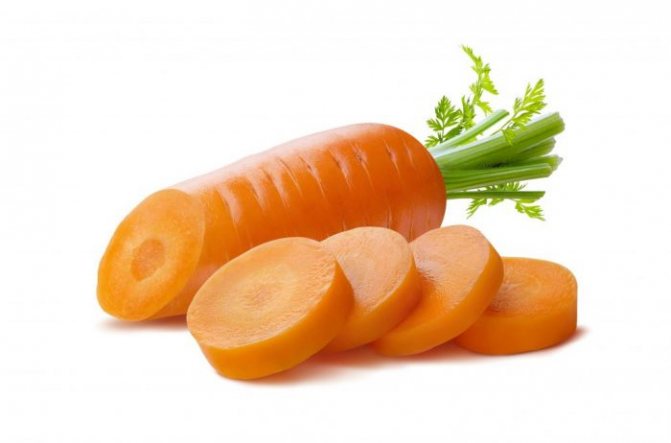

Reviews of the variety of mini-carrots
The baby carrot has received the well-deserved love of summer residents. Proof of this is their rave reviews.


Maria: “The little carrot is a real find! Minimum cultivation effort and maximum enjoyment on the plate. Little kids are eating these "little ones" by both cheeks! "
Ivan: “I was desperate to grow carrots in our permafrost (Murmansk region). I tried the Khibinskaya greenhouse variety - it feels great under the film, it takes out temperature changes with a bang. "
Vegetable harm
Ready and fresh carrots, the benefits and harms for the body of which require study, are still more useful for regular use. However, it is necessary to provide information about the harmful properties of this vegetable. First of all, this vegetable negatively affects the intestinal mucosa of the human body.
This vegetable is suitable for the treatment and prevention of various diseases. There are also contraindications for use. In particular, the use of this vegetable is highly discouraged in the event of the following pathologies:
- For diseases that are associated with disruption of the gastrointestinal tract, in particular, an increased level of acidity.
- With inflammatory processes that occur in the intestines.
- For allergies.
- With stones in the gallbladder and bladder.


